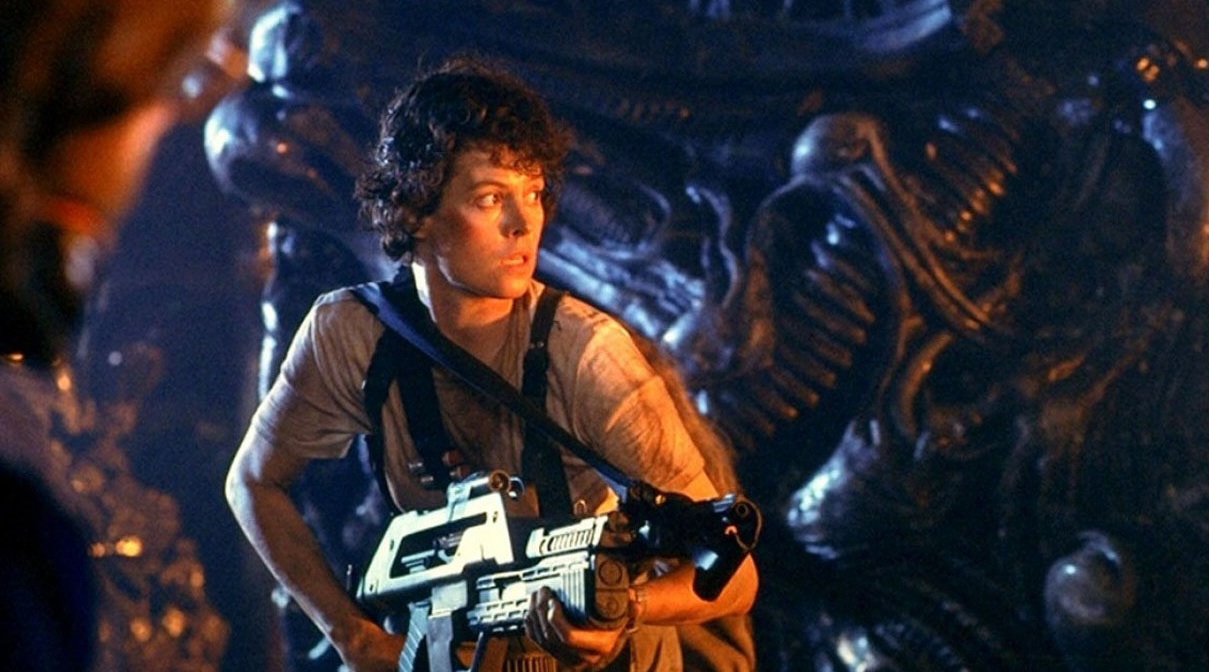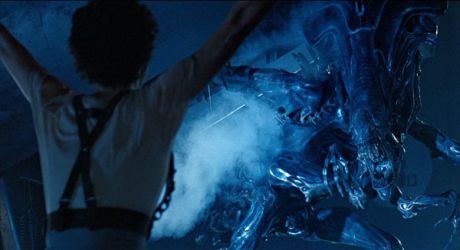Welcome back to 80s Bits, the weekly column in which we explore the best and worst of the Decade of Shame. With guest writers, hidden gems and more, it’s truly, truly, truly outrageous.
[stextbox id=”grey” caption=”Aliens (1986)” float=”true” align=”right” width=”200″]
Director: James Cameron
Writers(s): James Cameron
Runtime: 137 minutes/154 minutes (Special Edition)
Starring: Sigourney Weaver, Carrie Henn, Michael Biehn, Lance Henriksen, William Hope, Paul Reiser, Bill Paxton
Distributor: Fox
Country: US
Rating: Certified Bitstastic (?)
[/stextbox]
Ridley Scott’s Alien (1979) was not only a commercial success, and the winner of the 1979 Academy Award for Visual Effects: it was a defining moment in cinema. Arriving only two years after George Lucas’ space opera Star Wars (1977), Fox pushed out their only sci-fi script in development onto an unsuspecting public. Tightly pacing its claustrophobic horror, Alien remains a master class in creating terror in a sci-fi environment. Yet the road to a sequel was not paved with quicksilver, with director James Cameron originally discussing sequel plans during pre-production for The Terminator (1984). However, it was that delayed film’s box office returns that convinced Fox to greenlight a young Cameron’s “more on terror, less on horror” approach to Aliens.
Ellen Ripley (Sigourney Weaver), the last human survivor of the freighter Nostromo, is rescued and revived after 57 years in stasis. Her explanation for the destruction of the ship is met with skepticism from her employer, the Weyland-Yutani Corporation, and she learns that the planet where they first encountered the alien is now home to terraforming colonists. After contact is lost with the colony on LV-426, corporation representative Carter Burke (Paul Reiser) accompanies her and a group of heavily armed Marines to the planet. However, even they are ill-prepared for the horrors that await.
Arriving seven years after the original film, Cameron’s signature take on the Alien universe is an entirely different beast to Ridley Scott’s creation. The stillness of Alien is countered with the chaos of Aliens, the excesses and greed of 1980s global corporatism both influencing and skewered by a film that wears the indelible mark of its generation as war paint. Ripley is not simply the “last survivor” either, with her taking on a more affirmative role. Confronting her aggressors, who quite literally took away her world, she is pragmatic. “I say we take off and nuke the entire site from orbit,” she affirms. “It’s the only way to be sure.”
Even with Cameron’s amazing action sequences, and creature effects that included a fourteen-foot alien queen, the primary element that is never forgotten is the importance of character. Just as the best scenes in the original films were often those of simple interaction between the crew, the back-and-forth between Ripley and Corporal Hicks (Michael Biehn), along with Privates Vasquez (Jenette Goldstein) and Hudson (Bill Paxton) is where the film also derives its humanity and humour. Lance Henriksen as Bishop brings life to a synthetic character, one which forces Ripley to confront her own prejudices. Yet the action is magnificent, and devoid of CGI it remains gritty and real after three decades.
Cameron’s Aliens Special Edition (1992) blew the film out by another 30 minutes, but is a rare case of more is more. Greatly expanding on story and environment, or what Fox executives originally called “too much nothing”, the extra knowledge of Ripley’s own family gives added weight to her relationship with child survivor Newt (Carrie Henn). This remains the preferred version, and is recommended over the theatrical release.
It is difficult to say that Aliens surpassed the original film, because the franchise notwithstanding, they stand apart as separate entities. Cameron’s film undoubted outdid the action and spectacle of Alien, and set James “King of the World” Cameron on a path that would seem him continue to push the envelope in terms of size and technological boundaries. His Avatar (2009), the highest-grossing film of all time, was effectively a reworking of many of the themes and narrative devices he got right back in 1986. Even with the added benefit of twenty-first century special effects and a third dimension, Aliens remains an untouchable combination of raw action and terror that can’t be replicated.






